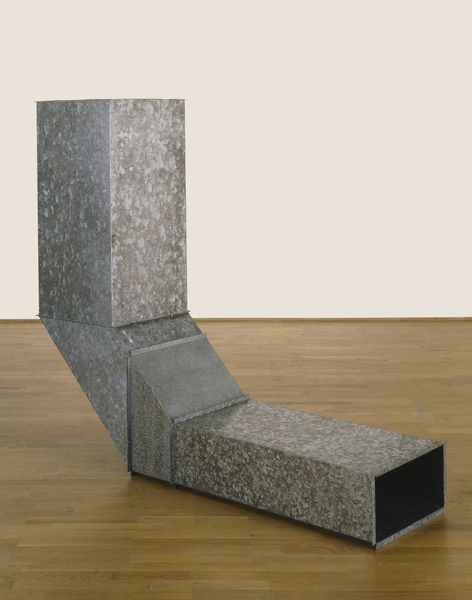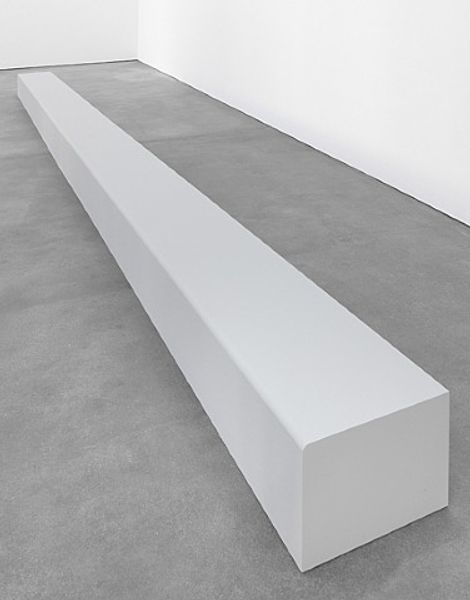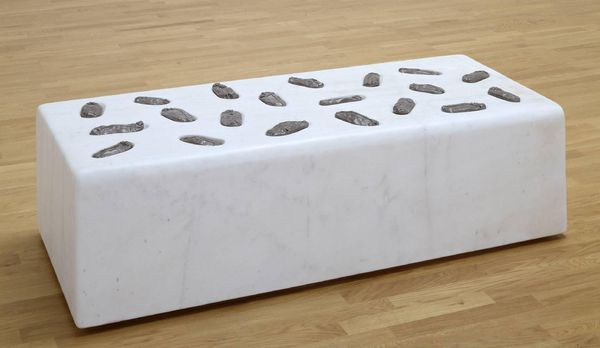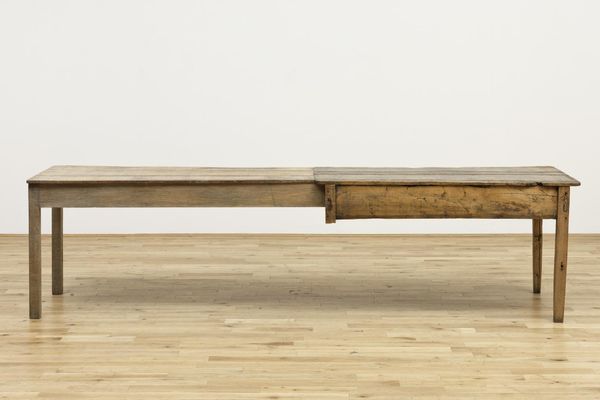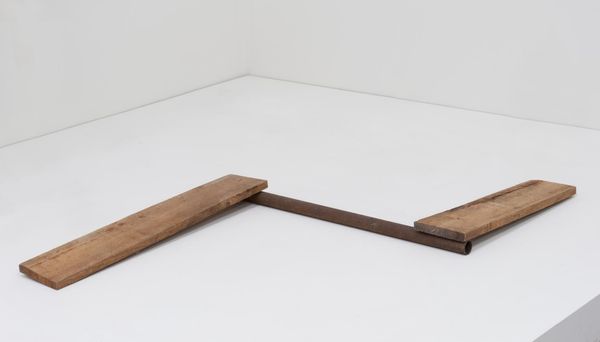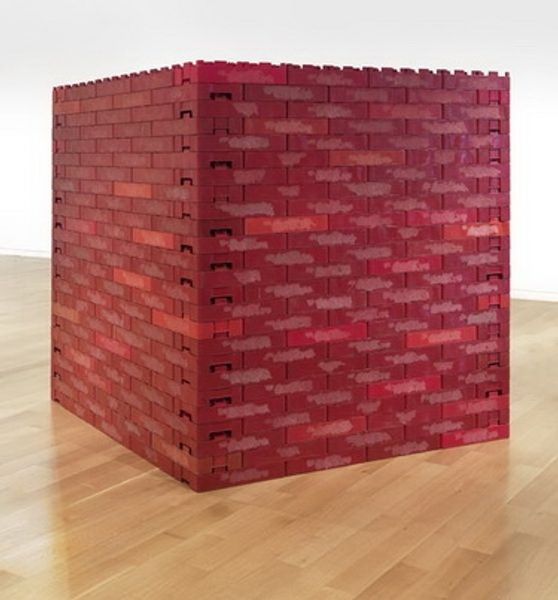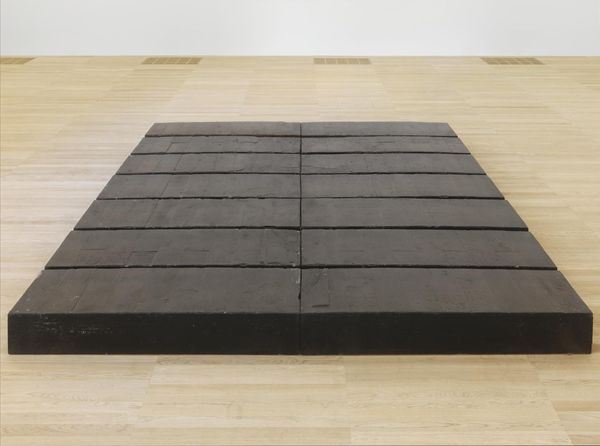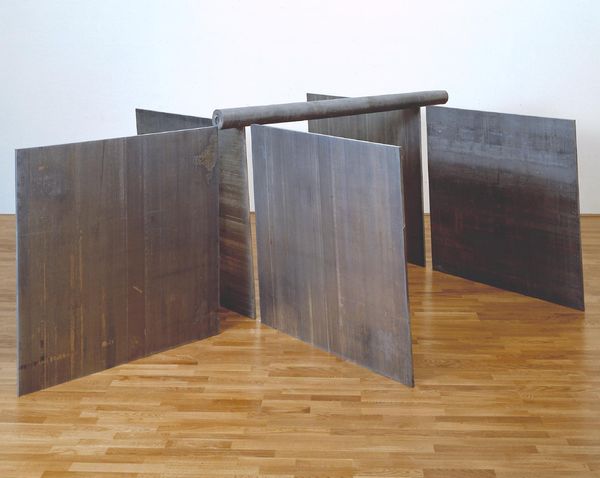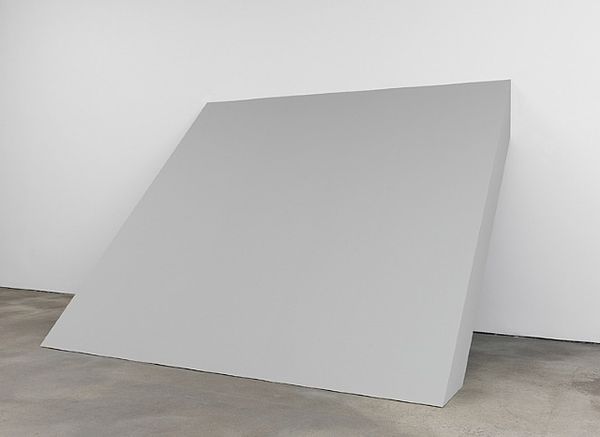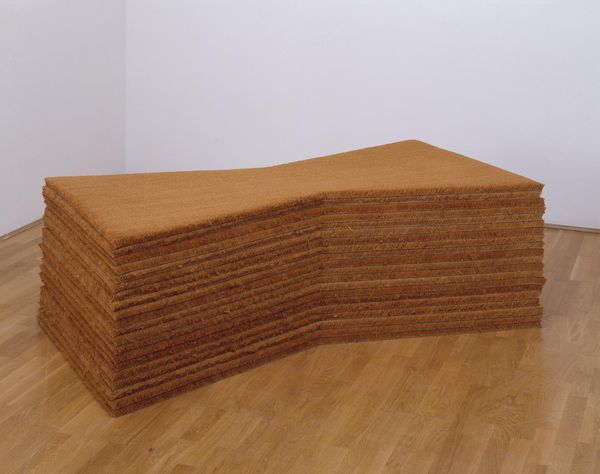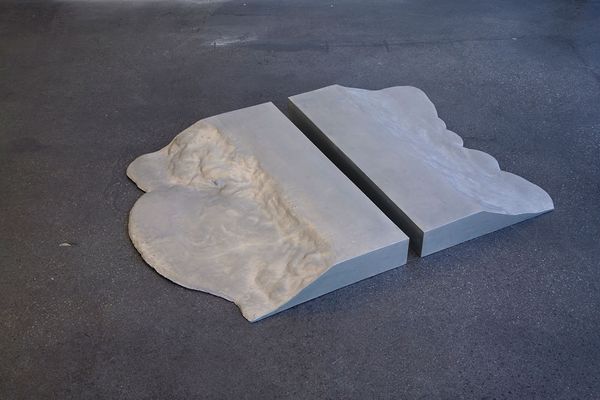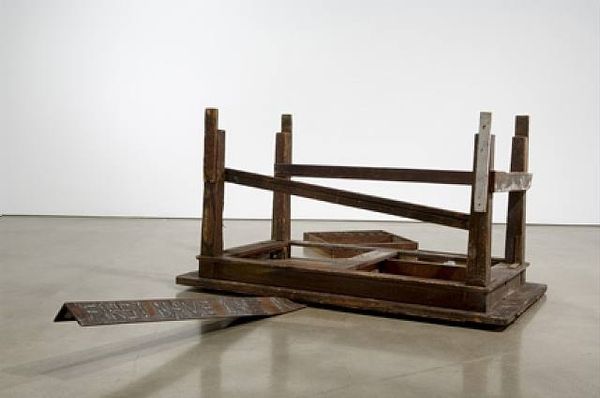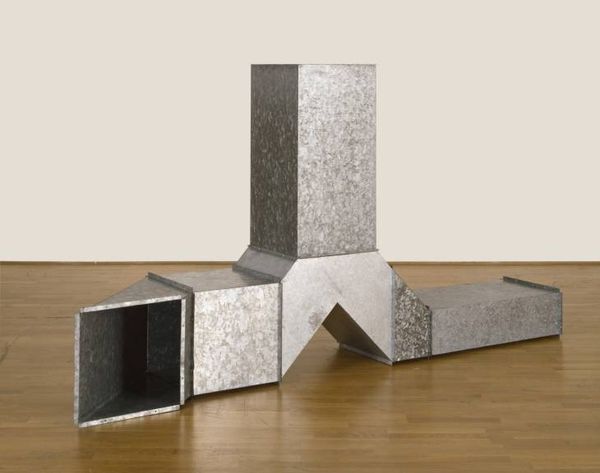
sculpture, wood
#
wood texture
#
conceptual-art
#
minimalism
#
geometric
#
sculpture
#
wooden texture
#
wood
Dimensions: overall: 19.1 x 113 x 20.3 cm (7 1/2 x 44 1/2 x 8 in.)
Copyright: National Gallery of Art: CC0 1.0
Editor: Here we have Wolfgang Laib's "Rice House," created in 1988. It appears to be a simple wooden sculpture, maybe painted? It's...unexpectedly orange. What I find intriguing is how this form, vaguely like a minimalist house, sits so deliberately on the floor. What do you make of this piece? Curator: Well, the simplicity itself is a potent statement. In the late 80s, Minimalism was facing critiques for its perceived detachment from social issues. Laib's use of natural materials like wood connects to Land Art and a concern with ecological awareness, becoming increasingly relevant at the time. Does the 'house' seem like shelter to you or something else? Editor: It definitely feels…deliberately un-sheltering. Too small, too solid, too orange! Almost like a marker, or a symbol. Curator: Precisely. And symbols operate within cultural contexts. Think about what a "house" signifies culturally: family, security, private property. Now consider its geometric rigidity. How does this stark simplicity challenge conventional notions of domesticity or belonging? The museum setting also frames its meaning, removing it from everyday life. It exists here as a carefully constructed idea, doesn’t it? Editor: So the ‘houseness’ is almost a question about the broader concept of ‘home’, rather than just the physical structure? Curator: Exactly. And that’s where its public role emerges. It prompts viewers to examine their own relationship to those concepts, challenging, perhaps even unsettling, assumptions about what constitutes ‘home’ in a world increasingly concerned with displacement and environmental change. It becomes political in its quietude, wouldn't you agree? Editor: Absolutely. I initially saw just a shape, but now I see the social questions it quietly poses. Thanks for pointing that out! Curator: My pleasure. Art reveals new layers when seen through different lenses. It encourages us to continually rethink how socio-political contexts affect meaning.
Comments
No comments
Be the first to comment and join the conversation on the ultimate creative platform.
